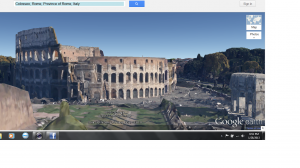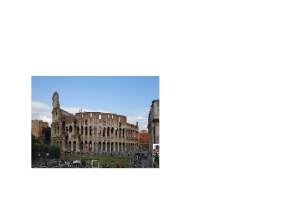@YakustaLeader4
With regards to Walter Benjamin’s “The Work or Art in the Age of Mechanical Reproduction”, the images above both represent perception and aura. For perception, first look at the bottom photo, then look at the top one. In the bottom picture there is not much to perceive by because there is not any distortions or anything weird about it. But, when you look at the top picture, then the perception gets all weird and distorted. The Colosseum in both pictures is very visible and recognizable. However, everthing around it is very distorted in the top picture, where as the bottom picture, nearlly everything is visible.
For the aura of this piece, it works very well for the pictures referencing something historical. In the bottom picture, it has a very calm aura; not many clouds, sunny, probably cool. For the top picture, it is very focused on the Colosseum as the center piece, with its surroundings having a distorted aura. But, like the bottom picture, the top also is on a sunny day, with no clouds at all. Also, there is tradition within these pictures as well. For the Colosseum, it was very popular during the Roman Era, with its chariot races and gladiators.
With all that in mind, the pictures above very well represent Walter Benjamin’s concept of art and some of the meanings behind certain pieces.





